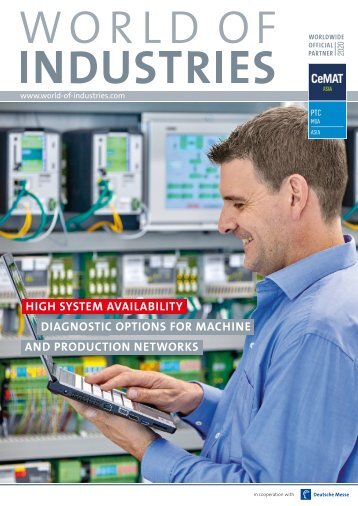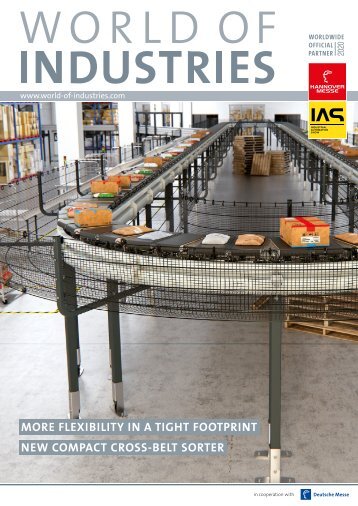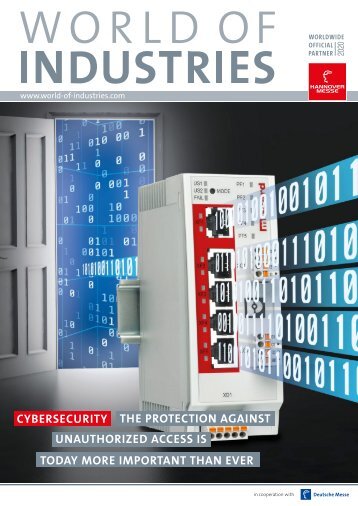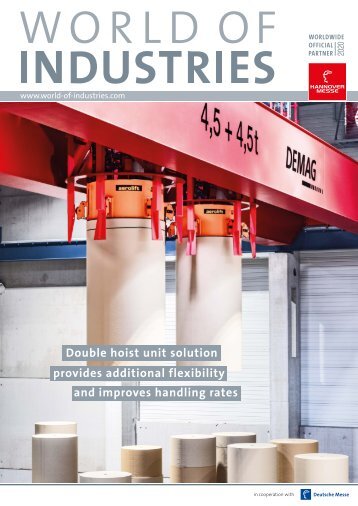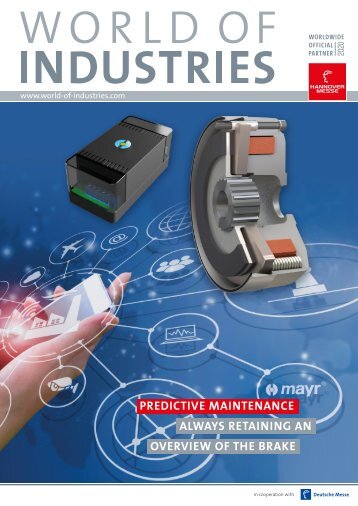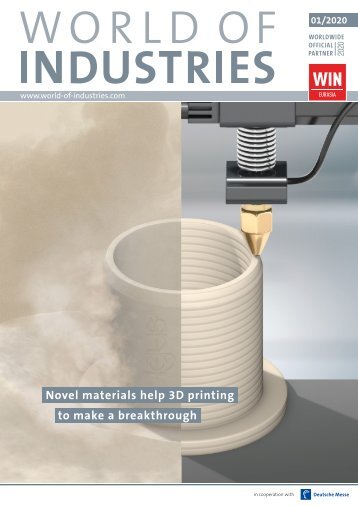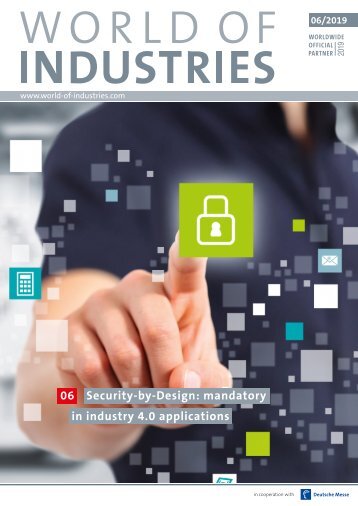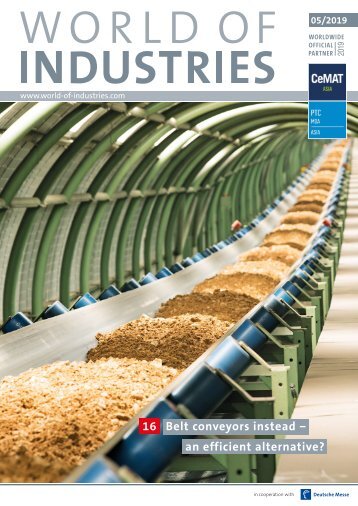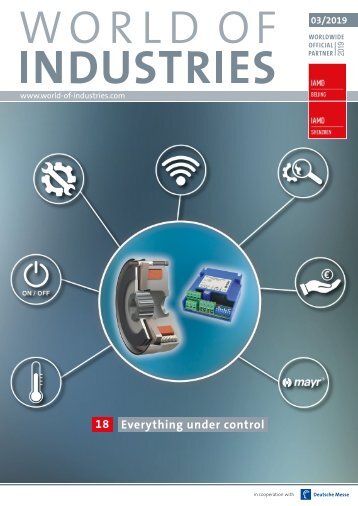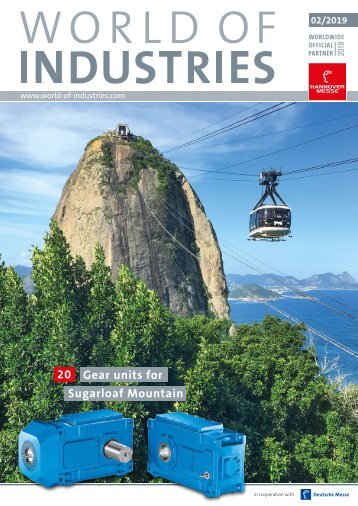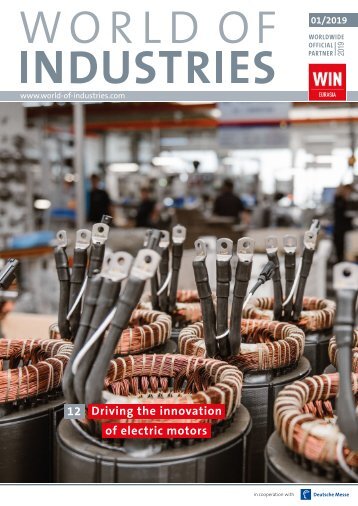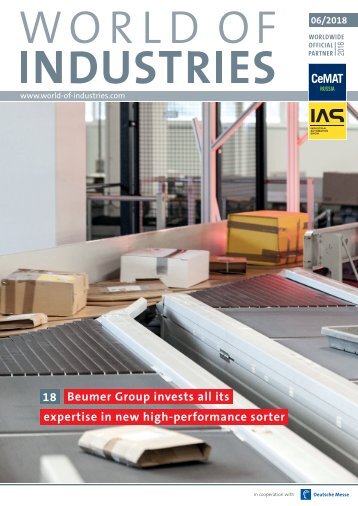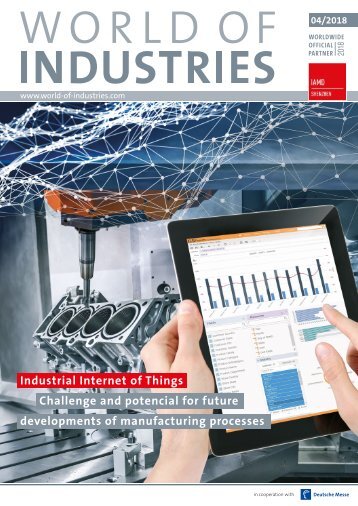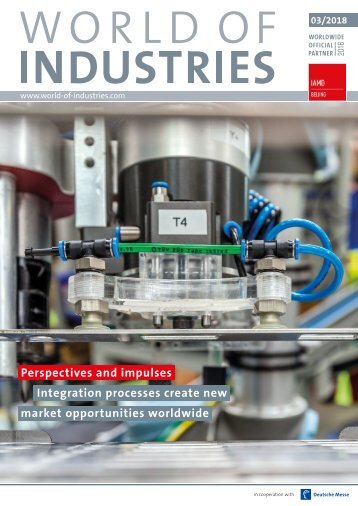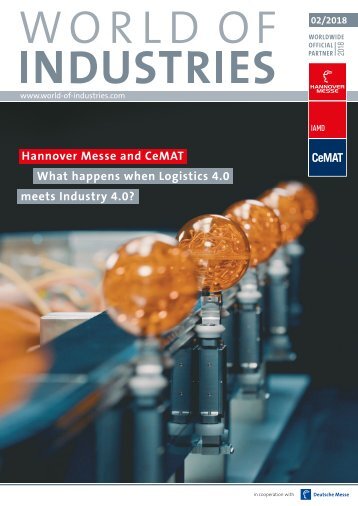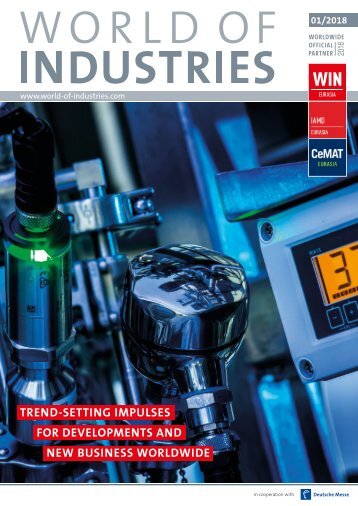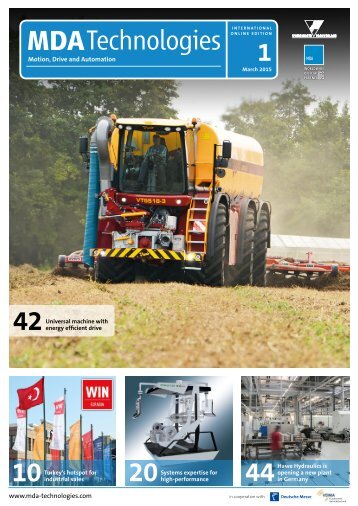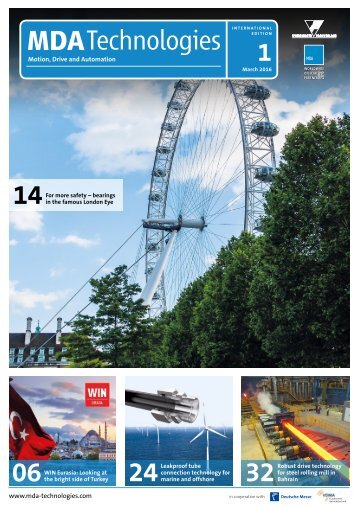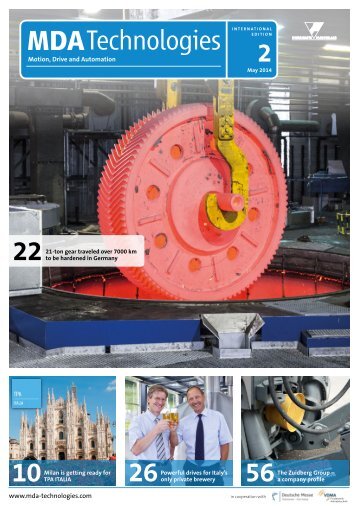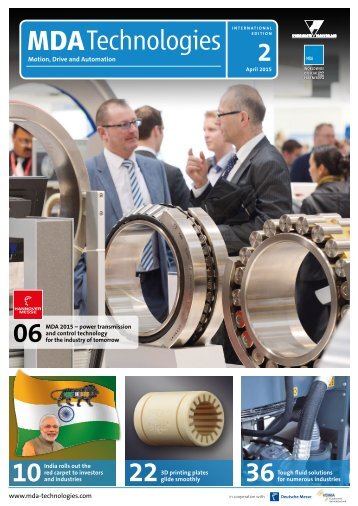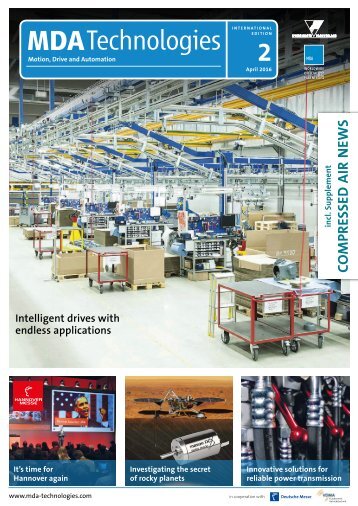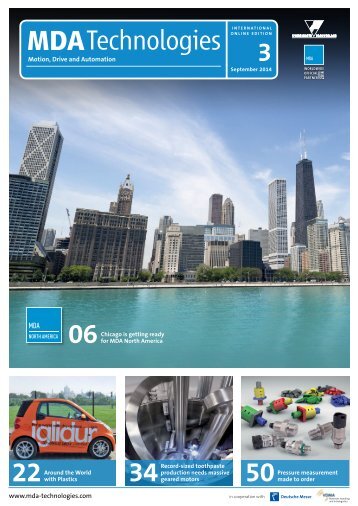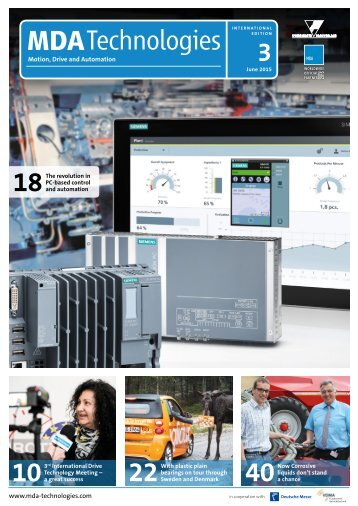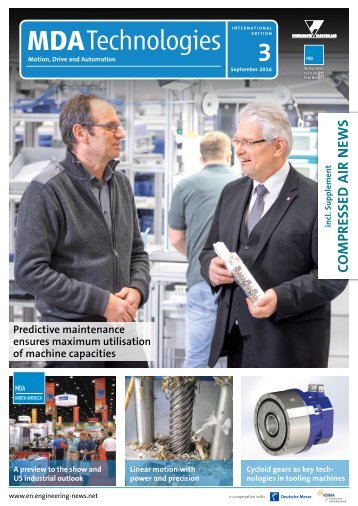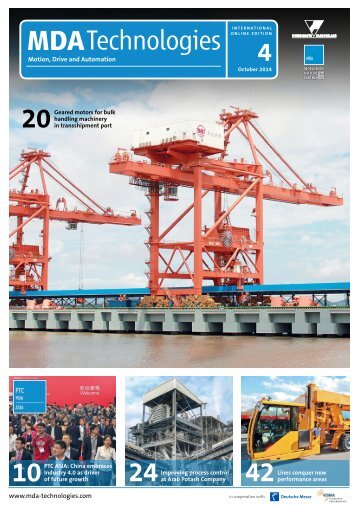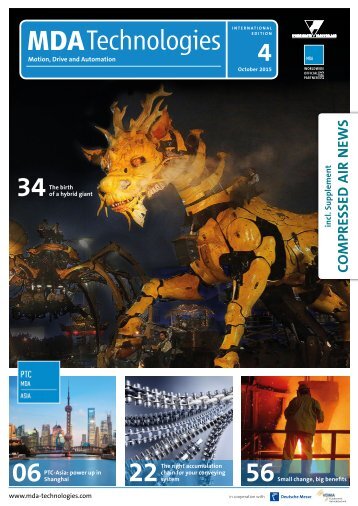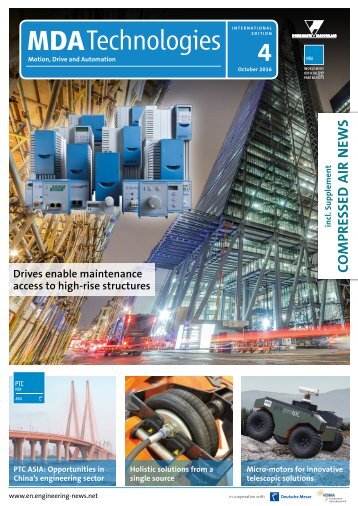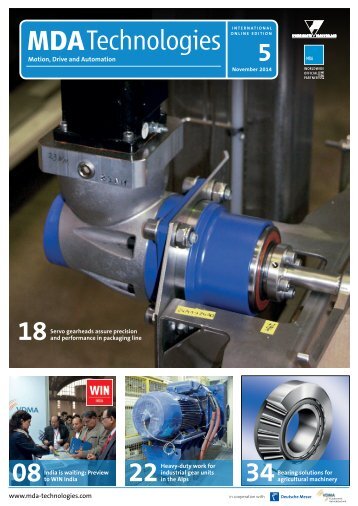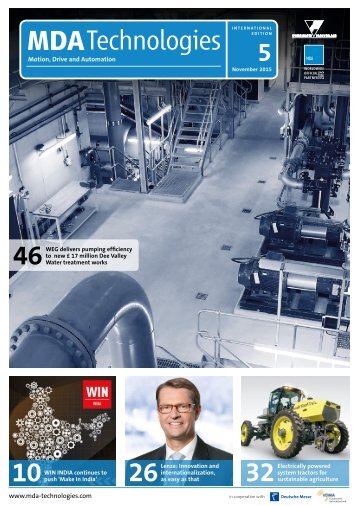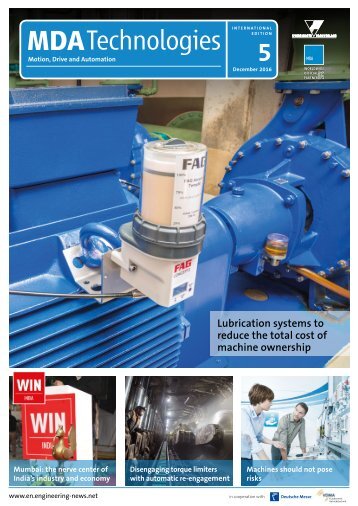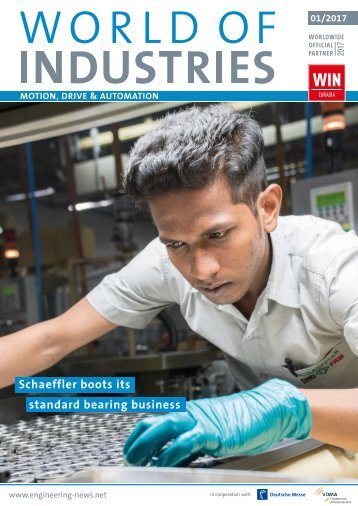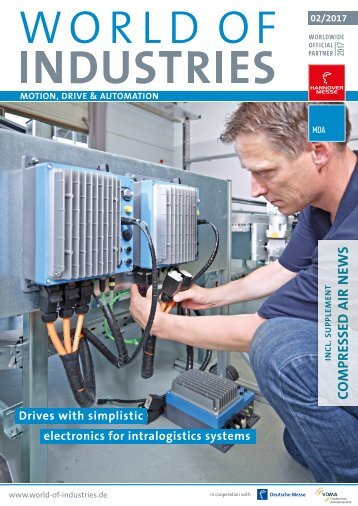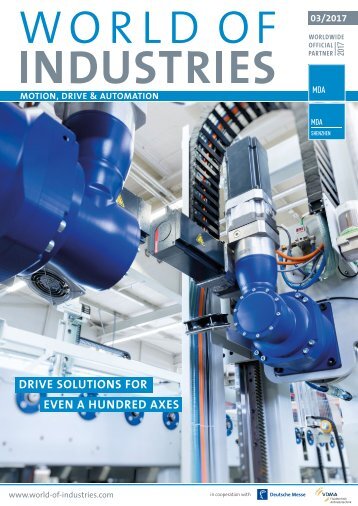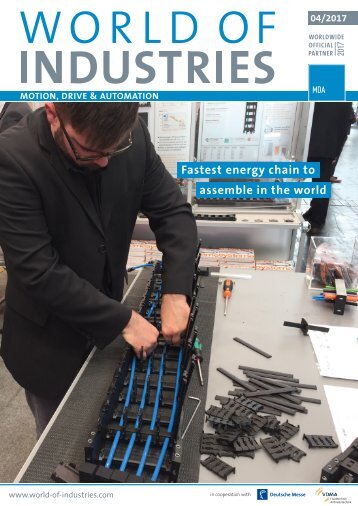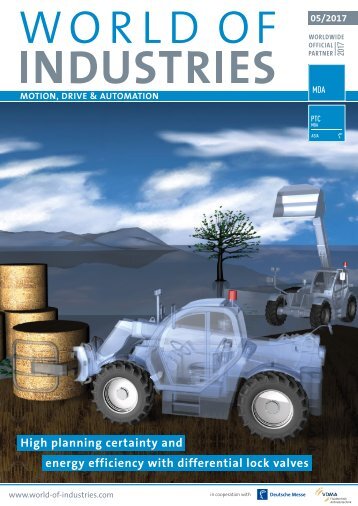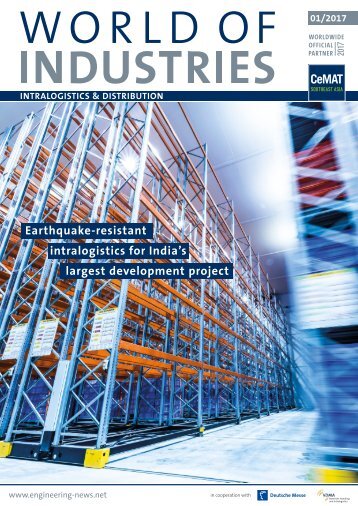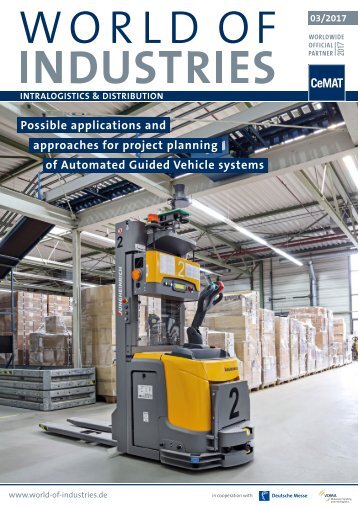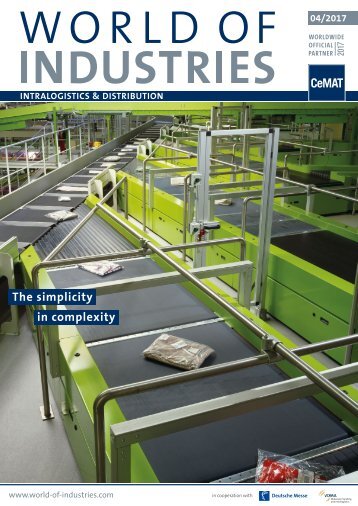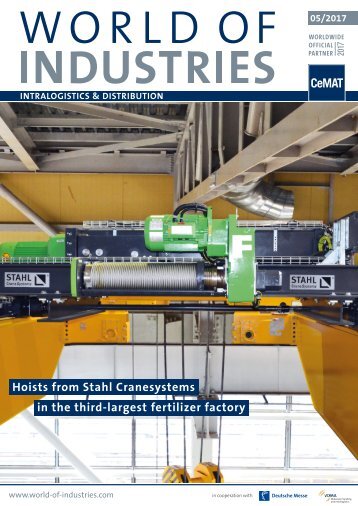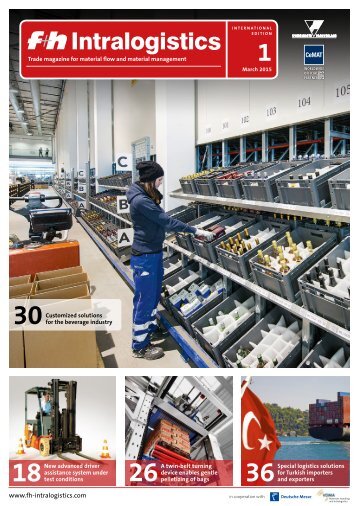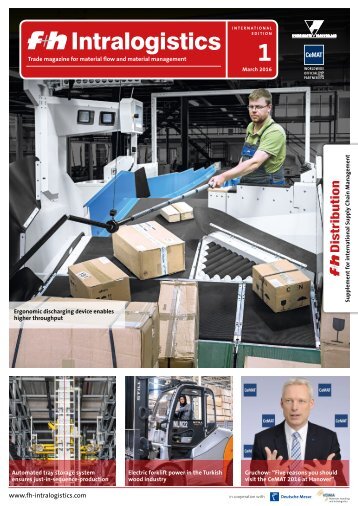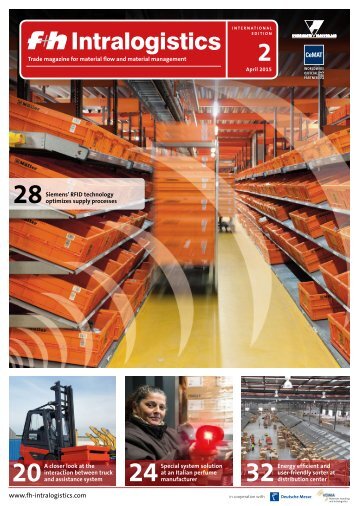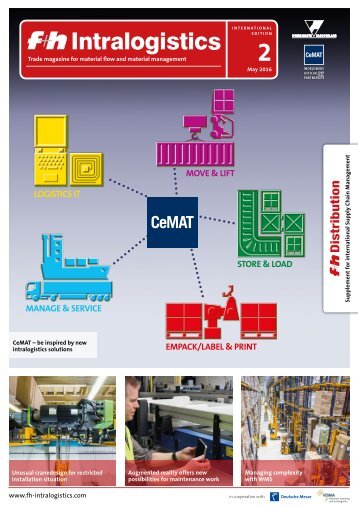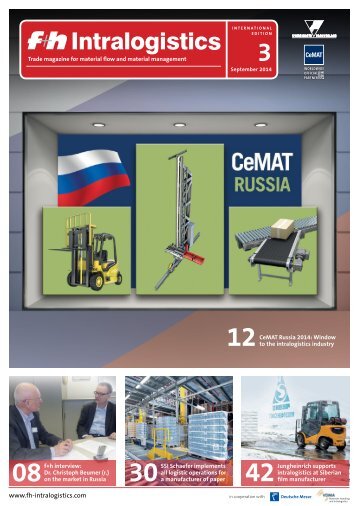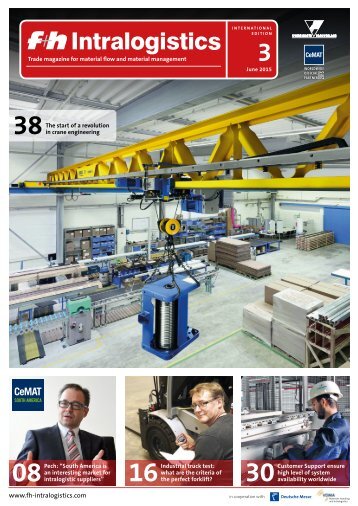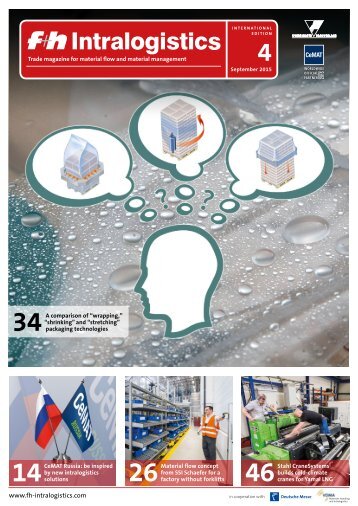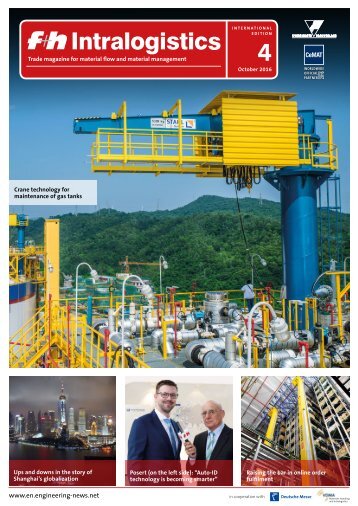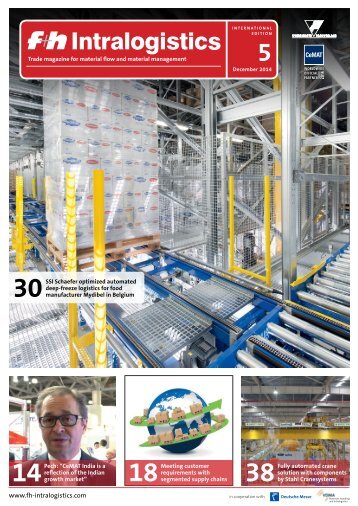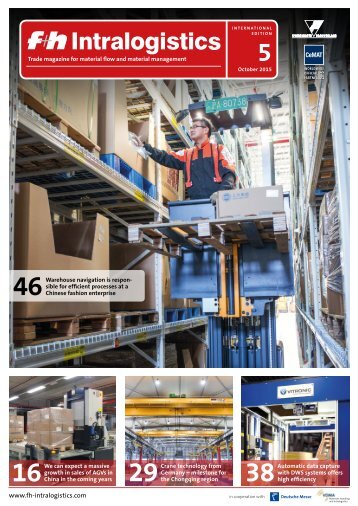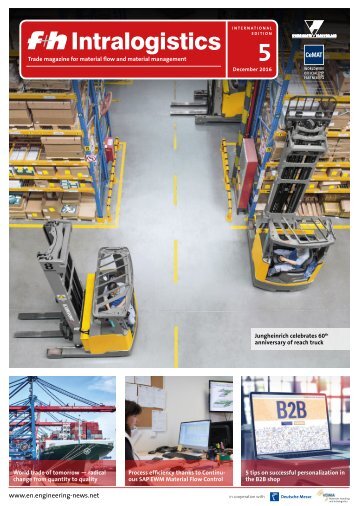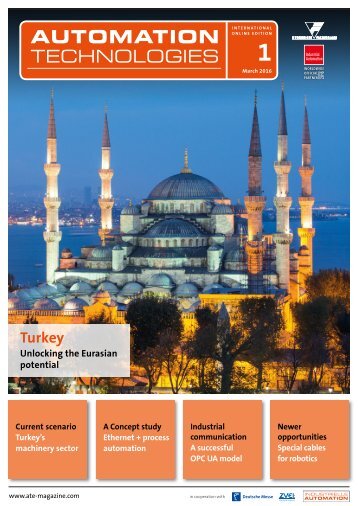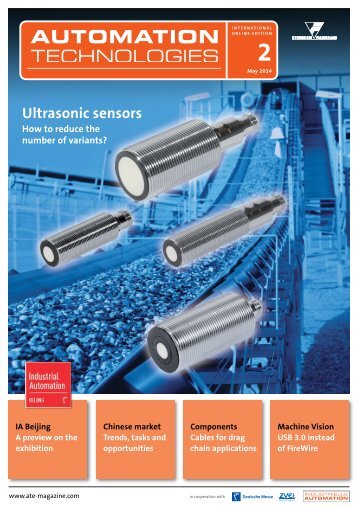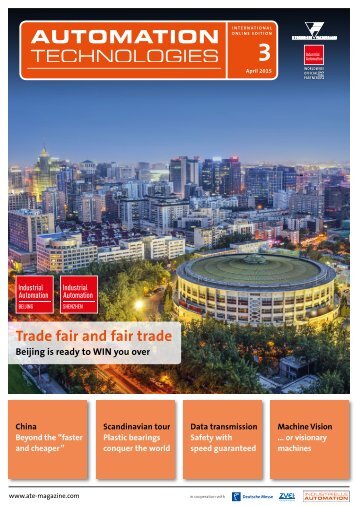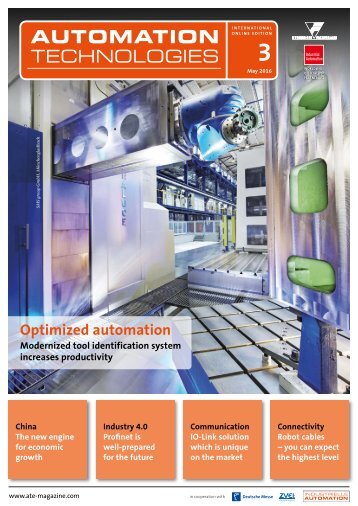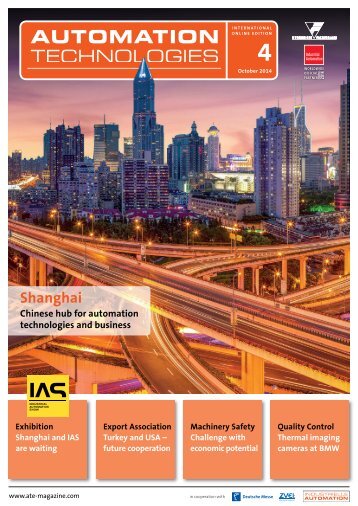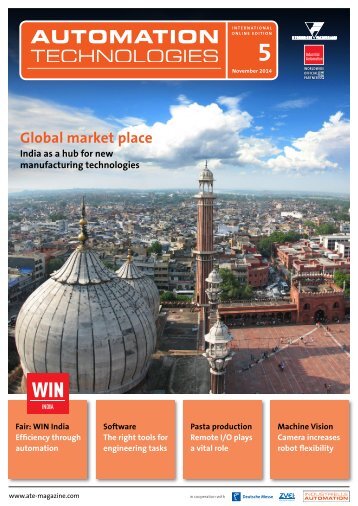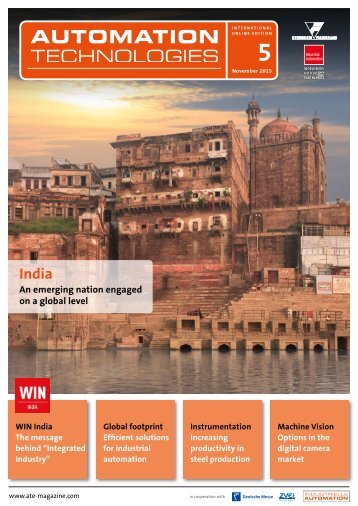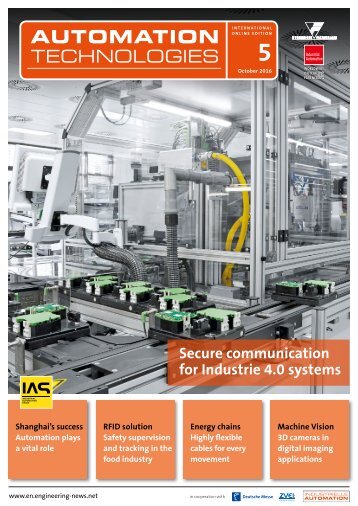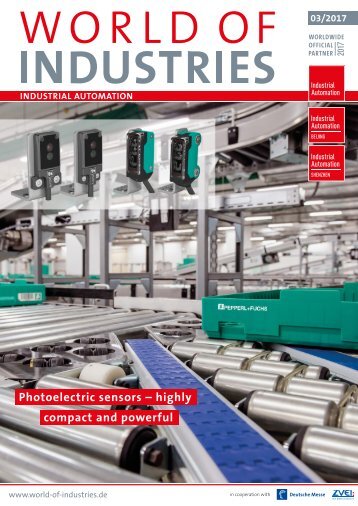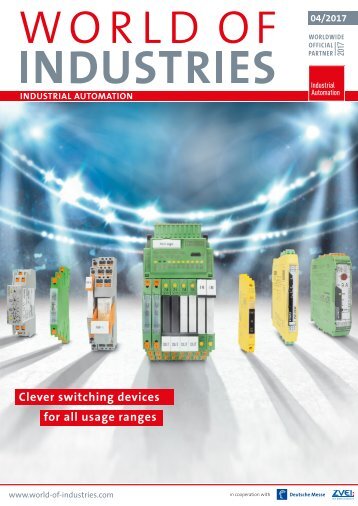Automation Technologies 3/2016
- Text
- Automation
- Technologies
Mobile tanks in
Mobile tanks in pharmaceutical production Pressure measurement in pharmaceutical processes to avoid contamination SENSORS AND MEASUREMENT Joachim Zipp In pharmaceutical processes, pressure measuring instruments must fulfil the widest variety of tasks. They control the process pressure, serve as leak detection, they are used for the control of pumps, filters and cleaning processes and also for the monitoring of filling levels. These pressure measuring instruments in the pharmaceutical processes are subjected to the highest safety criterion: For the protection of consumers, there must be no contamination risk to the end product arising from the measuring instruments and assemblies. As a result, the sterile boundary must be maintained within every phase of the process. In the sensitive processes of the pharmaceutical industry the human risk factor must be reduced to a minimum. The plants operate almost fully automatically, with the control of the processes based on electronic instruments and systems. In the case of pressure measurement, we are talking about transmitters, programmable transmitters and switches. In addition to reliable measured value registration and processing, the measuring instruments used should be robust, low-mainte- Author: Joachim Zipp, Global Market Segment Manager Food and Pharma, Wika Alexander Wiegand SE & Co. KG, Klingenberg, Germany nance and easy to operate – not only for economic reasons. These characteristics also support the process safety in terms of the end product. Investigations have shown that the majority of damage to instruments that might lead to product contamination are due to incorrect handling. Other reasons are due to damage caused by corrosion or unforeseeable events such as an excessive pressure surge. Diaphragm seal or ceramic sensors For many applications in the pharmaceutical industry, diaphragm seal solutions are used. It consists of a diaphragm seal made from stainless steel or other special material, the measuring instrument itself and the filling fluid – glycerine or paraffin oil which conforms to the GMP guidelines. The diaphragm takes the pressure and transmits it hydraulically to the programmable transmitter or switch. Thus the measuring instrument is permanently separated from the process and delivers an accurate measuring result, protected from influences. Diaphragm seals offer a high operational flexibility. Using them, almost all instruments can be connected hygienically to a process. This is an advantage over measuring instruments with ceramic sensors. The primary reason for using ceramic sensors in sanitary applications is their high accuracy. The pressure measurement is made directly with a flush-mounted capacitive sensor without any system filling fluid which might, in the event of any damage, find its way into the process. In comparison to the metallic diaphragms of diaphragm seals, ceramic sensors are considered to have a higher resistance to shear forces or corrosion in the long term. Failure of a ceramic sensor would immediately be recognized to the operator by a loss of the signal. With a diaphragm seal system which has a AUTOMATION TECHNOLOGIES 3/2016
damaged diaphragm, the measuring process still functions. The damaged seal goes undetected until a visual inspection is completed. But a ceramic sensor is not immune to damage either. This can occur through hard water and steam in the process or by an abrupt thermal cycling. If the ceramic shatters, air and foreign matter from outside can enter the process via the ventilation and contaminate the sensor. By using diaphragm seals the process always remains sealed, even when a diaphragm is compromised, and thus the sterile boundary is maintained. However, it can happen that products are contaminated even with a sealed process. Due to the measurement accuracy, the thickness of the seal’s diaphragm is limited. Therefore, long-term overloading in the process can lead to deformations. And product particles can settle in further forming microbes. A similar effect can also not be excluded with ceramic sensors. The weak point here is the sealing between the sensor and the metallic process connection: In the first place, substances can diffuse into the seal, and can be released once again with the next process stage. Secondly, the seal can be overstrained with high temperature dynamics, and thus a gap can be opened up at the process connection – a point for potential deposits. If these remain undetected, they can be transferred to subsequent processes. This undetected cross-contamination usually has serious regulatory and economic consequences with costs in the millions. Therefore, pharmaceutical companies strive to prevent such damage. In highly sensitive processes, for example, pressure measuring instruments are removed after each batch and checked for damage. This adds costs to the manufacturing process. The dual diaphragm system Wika has developed a special solution which addresses these issues: A diaphragm seal system with a dual diaphragm and diaphragm monitoring removes the risks and the consequential damages as described above. Using this patented system, the space between the two diaphragms is evacuated and the vacuum can be monitored with a measuring instrument. The type of monitoring can be specified individually, depending on the sensitivity of the process. With regular on-site visual inspection, for example, it is sufficient to check a pressure gauge with green-red display, in other cases an optical or acoustic alarm in the control room may be required. Should the wetted diaphragm become damaged, the second diaphragm forms a reliable seal to the process and maintains the pressure monitoring until the damage has been rectified. Since a break within the system is detected and reported immediately, no microbes can get past the diaphragm undetected. Diaphragm pressure guages In spite of the extremely high level of automation in pharmaceutical processes, not every measuring point absolutely has to be catered for electronically. For such cases, diaphragm pressure gauges with flush diaphragms are particularly worthwhile. These enable the measurement of low pressures and are exceptionally safe in overload as a result of their design. They keep the process sealed, even with pressure surges. For such pressure gauges, Wika also offers diaphragm monitoring, which will immediately indicate any rupture in the pressure element. As the pharmaceutical industry is increasingly turning to the development and manufacture of individual medicines, the dimensions of containers are getting smaller and smaller, Processes with small units and batches are the result. The measuring instruments for the corresponding tanks therefore have limited space available. This can quickly become tight for diaphragm pressure gauges: The lower the pressure to be measured, the larger must be the diaphragm diameter and, with that, also the process connection. 01 Programmable process transmitter with diaphragm monitoring 02 Programmable process transmitter with diaphragm seal To address this problem, Wika has developed a new pressure gauge for small external areas: The model PG43SA-C measures in the low-pressure ranges with a proportionately much smaller diaphragm. This instrument combines the reduced connection size with a further specific feature that is particularly important for such measuring requirements on tanks: It is autoclavable. The pressure gauge can be sterilised with the vessel under saturated steam conditions at temperatures up to +134 °C, without needing to be dismounted. The process thus remains sealed, also in the mobile phase, and the quality assurance is preserved. Conclusion The more critical the pharmaceutical process the more important is the consistent maintenance of the sterile boundary in the manufacturing process. Along with the measurement technology, even risk prevention has an equally high requirement of accuracy and reliability. Photographs: Wika Alexander Wiegand SE & Co. KG, Ulf Salzmann www.wika.com About Wika The company Wika Alexander Wiegand SE & Co.KG, Klingenberg am Main, is a worldwide manufacturer and supplier of pressure, temperature, level, flow and calibration measurement technology. The company has around about 9,000 employees worldwide including in the subsidiaries in over 40 countries. Wika Group has a annual sales revenue of 845 million Euros with annual production capacity of 50,000,000 units worldwide. The Klingenberg based company has its production facilities in Germany, Brazil, Canada, China, India, Italy, Poland, South Africa, Switzerland and USA. AUTOMATION TECHNOLOGIES 3/2016
- Page 1: INTERNATIONAL ONLINE EDITION 3 May
- Page 4 and 5: COLOMBIA SLOVAKIA The new engine fo
- Page 6 and 7: News and Markets Kathrin Pogrzeba j
- Page 8 and 9: Industrial Automation: the new engi
- Page 10 and 11: Beijing: the heart of North China
- Page 12 and 13: Industrial transformation and econo
- Page 16 and 17: Automated parking space monitoring
- Page 18 and 19: Servo drive series with intelligent
- Page 20 and 21: Ethernet based networks: a bridge b
- Page 22 and 23: Easy, fast and efficient IO-Link so
- Page 24 and 25: Modernized tool identification syst
- Page 26 and 27: Cables from Cologne for Bavarian ro
- Page 28 and 29: Cable glands guarantee perfect reli
- Page 30 and 31: Small but powerful: Embedded Vision
- Page 32 and 33: Using vibrations to detect faults M
- Page 34 and 35: Non-contact temperature measurement
- Page 36: SLOVAKIA Ergonomic discharging devi
Inappropriate
Loading...
Mail this publication
Loading...
Embed
Loading...

